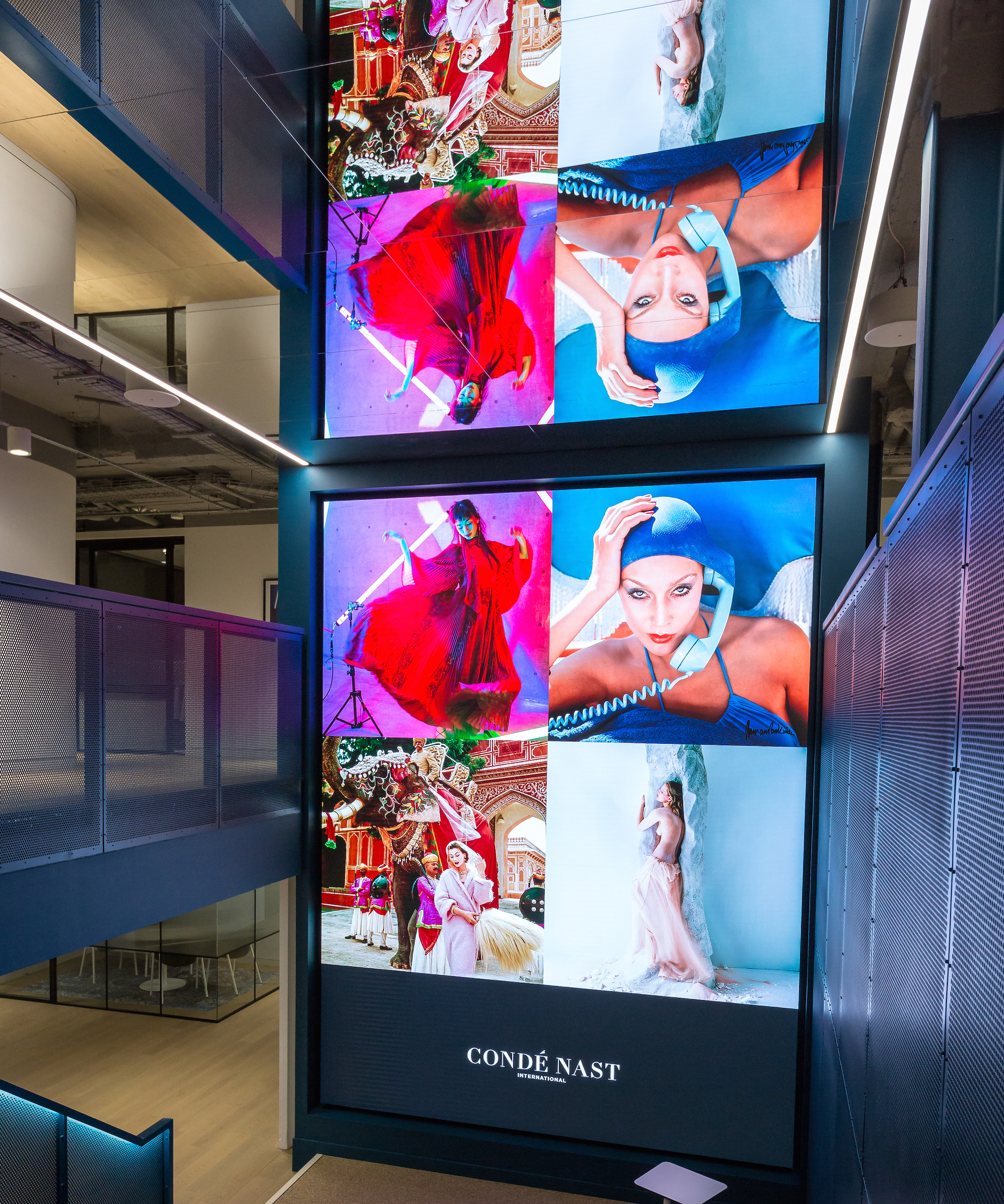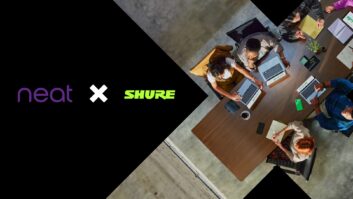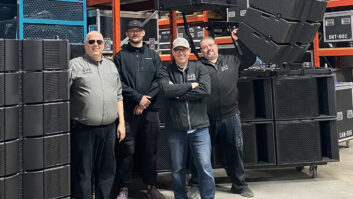
As the publisher of iconic magazines including Vogue, Glamour and Tatler, Condé Nast International (CNI) has a formidable track record in what it describes on its website as “visually arresting” titles. It therefore seems entirely in keeping with tradition that one of the most important aspects of its new offices is a huge videowall spanning two floors and incorporating the latest control and display technologies from Christie and Crestron.
Located in the Adelphi building in London’s Strand, the new offices were the subject of an extensive fit-out including extensive videoconferencing facilities, editing suites, fire alarm and HVAC systems, latest-generation lighting and more. But arguably the most striking single element is an area – ultimately dubbed The Well – for which CNI had the vision of an environment that could be used to showcase its digital imagery, support collaborative working, and avoid the creation of silos.
Working in conjunction with CNI project manager Lynnette Lawrance and her team, project architects MCM evolved a concept for a mini-auditorium situated in the stairwell between the two floors comprising Condé Nast’s new home. At the heart of the auditorium is a media wall that, remarks MCM lead architect Deepak Parmar, “had to be beautiful, but also practical, and the goal was to create a simple user experience. To achieve this, the technology solution needed to be intuitive, open, approachable and reactive, with interactive support for all, across all functions.”
Design of The Well system was entrusted to MiX Consultancy, with Focus 21 Visual Communications implementing that design in conjunction with primary contractors BW. The wall was ultimately based around Christie’s Velvet Apex Series indoor LED tiles, which feature an ultra-fine 2.5mm pixel pitch, 16:9 aspect ratio, UHD resolution and advanced monitoring capabilities, while multiple Crestron systems provide control.
“MiX Consultancy worked very closely with the client to select a manufacturer for this project,” says Sebastian Day, director – audio visual services at MiX Consultancy. “After going through an extensive selection process, Crestron and Christie technologies were chosen as they were not only the most suitable for this particular application and project, but will also be relevant for the future work and roadmap that the client is looking to undertake. Maintenance and support were also key factors in the selection process.”
The other brands to feature prominently in the videowall area are Extron extenders, cables and connectors; Dell external video adapters; Lightware extenders; and QSC DSP audio cores and amplifiers.
Careful planning required
As might be expected, the stakes were rather high for the actual installation of the videowall, which was factory-built and tested off-site with the customer, consultant and construction manager.
As Jim Harwood, managing director of Focus 21, remarks, “the installation of any small-pitch LED needs careful planning and execution, especially so in a 16-week programme construction [timeframe], where other trades needing to access the LED screen area caused additional risk management headaches. The use of specialist access equipment in the double-height space was also a consideration.”
The videowall has been implemented in conjunction with a giant mirror on the ceiling above the new stairwell in order “to create the illusion of the area being even larger,” says Parmar. “The mirror reflects both the digital canvas of the wall and the print library based next to the wall, and captures the very essence of Condé Nast past and future.”
Videowall with Outlook
One clear signifier of the impact that The Well has had on CNI’s day-to-day activities is the fact that an Outlook calendar has been introduced to deal with the high levels of demand. “The idea that this wall has its own Outlook diary is an interesting and defining characteristic,” says Harwood. “It’s the client’s use of the space which really makes it stand out. It’s the focal point of the office; everyone uses the wall, and when it’s not in a pre-booked use for a meeting or presentation it’s employed for continual internal communication and messaging.”
The Vogue team is among those to be making the most of the new installation. Motion graphics designer François de Montremy remarks that The Well “has created a connection between the editorial team and other employees, bridging the gap between each department and helping connect the generations. [For example] we use Dropbox to post Snapchat images to the screen, and it’s been great to get feedback from other staff who can get to see what we do and why we do it.”
Aidan Geary, director of operations at CNI Digital, believes that the participating teams have effectively “created the beating heart of the office. The impact has been twofold; the media wall is not just arresting in its beauty, it has become a place where teams spontaneously meet to hold presentations and get feedback from others. We saw an instant change in how people worked.”
Reflecting on the project, Day recalls that MiX Consultancy had worked with MCM and Focus 21 on “a number of fit-outs in the past, and this previous experience gave us a great starting point to working together as a team on this project. The architectural and technology designs were heavily integrated to create the most suitable workspace, and everyone really worked together to deliver the client’s vision. The feedback from Condé Nast International has been very positive, and the adoption and utilisation of their new space has been successful.”







